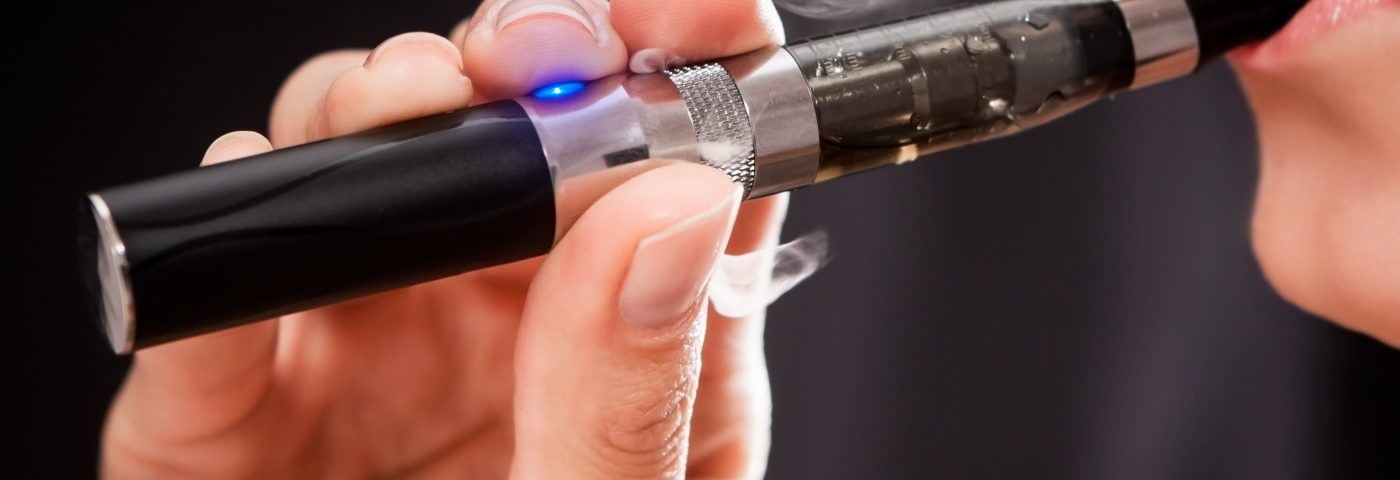E-cigarettes carry much less cancer risk than tobacco smoke, although some types are more risky than others, a study shows.
The research, “Comparing the cancer potencies of emissions from vapourised nicotine products including e-cigarettes with those of tobacco smoke,” was published in the journal Tobacco Control.
In the past several years, vaping has become popular among people who want to avoid cigarette smoking. Both the scientific community and the public have been divided over whether vaporized nicotine products, such as e-cigarettes or heat-not-burn products, are better for your health than smoking.
E-cigarettes function by heating a nicotine-containing liquid, while heat-not-burn products heat tobacco.
Studies have shown that vaporized nicotine products, or VNPs, can expose people to cancer-causing agents. The question has been how much cancer risk they pose.
Dr. William E. Stephens of the University of St. Andrews led a team that decided to determine the cancer risk of the individual compounds in VNPs, then calculate an overall VNP cancer risk.
They looked at published analyses of emissions to generate cancer-risk figures for a number of nicotine-delivering aerosols, including cigarettes, e-cigarettes, heat-not-burn, and medicinal nicotine inhalers. To compare risk across the aerosols, they then came up with a measuring device called inhalation unit risk. They defined it as the risk of developing cancer per unit of chemical inhaled.
The team coupled inhalation unit risk with smokers’ estimated daily consumption to arrive at final risk figures.
Each of the aerosols had different cancer potencies, they discovered. Cigarette smoke had the highest. potency. Most e-cigarettes had cancer potencies that were less than 1 percent of cigarette smoke, although a small minority had much higher potency than the others.
Interestingly, the minority was associated with high levels of carbonyls — or carbon compounds — that the e-cigarettes generated when a lot of power was applied to their atomizer coil. The coil is the part of the vaporizer that turns its liquid into an aerosol. It must be heated to do this.
Another finiding was that heat-not-burn devices have lower cancer potency than cigarette smoke but much higher potency than most e-cigarettes.
“Optimal combinations of device settings, liquid formulation and vaping behavior normally result in e-cigarette emissions with much less carcinogenic potency than tobacco smoke,” Stephens’ team wrote. But “there are circumstances in which the cancer risks of e-cigarette emissions can escalate, sometimes substantially.”
The team concluded that cigarettes posed the highest lifetime cancer risk, followed by heat-not-burn devices, then e-cigarettes and finally medicinal nicotine inhalers.


I have a young daughter who was just diagnosed with lung cancer. She quit smoking after having two heart attacks in two days. That was 1 1/2 years ago. She has been vaping ever since. My question is is this safe for her to do? Can someone please answer me? Desperate mother!
I knew it! This study is enough to stop my worries. I have been vaping now for 3 years and I feel so much lighter than ever. I am glad that I finally decided to quit smoking for good.
Personally, I don’t need the science to tell me what I already know: I feel way better now vaping than I did when I was smoking. Still, it is nice for the science to back up what my body is already telling me.